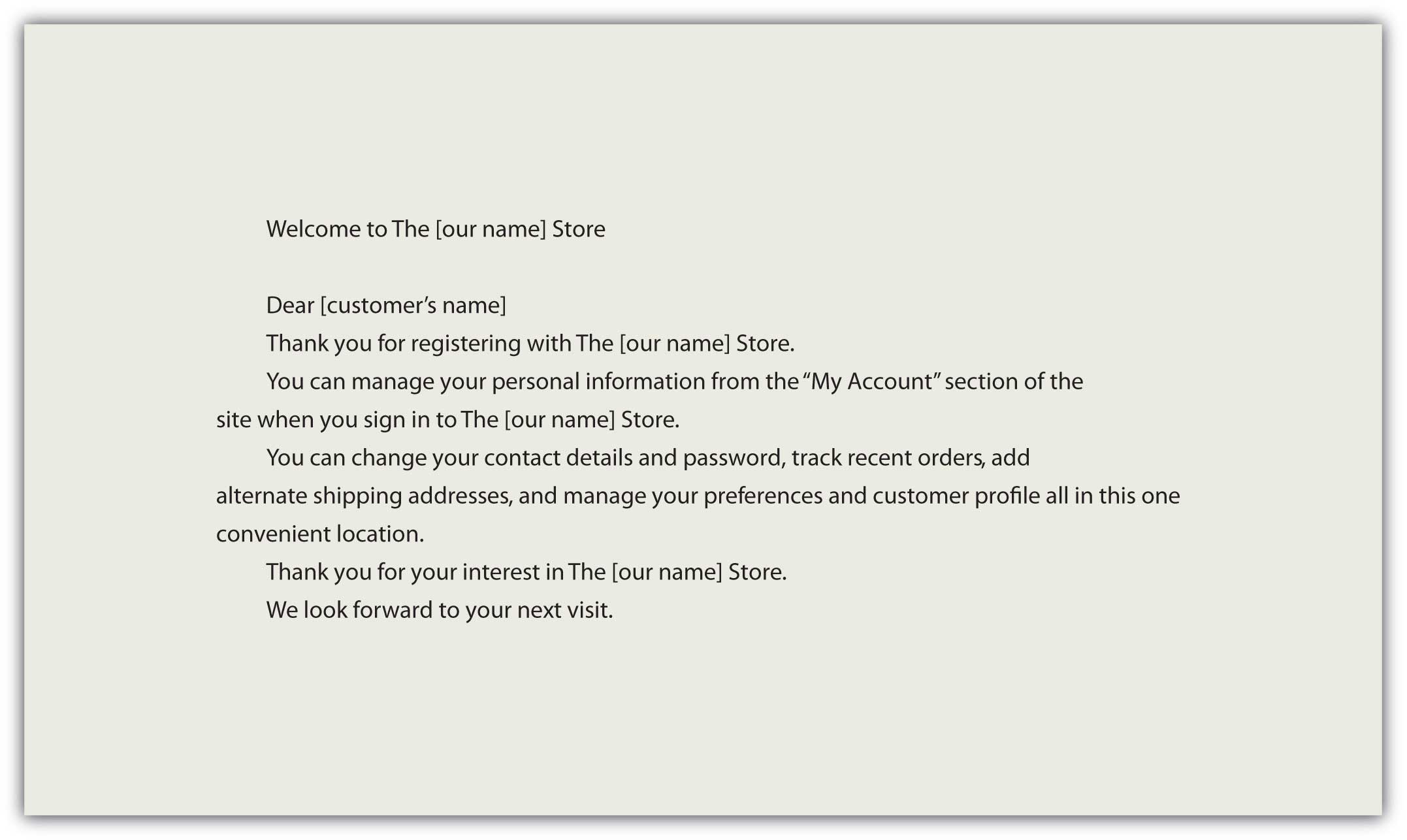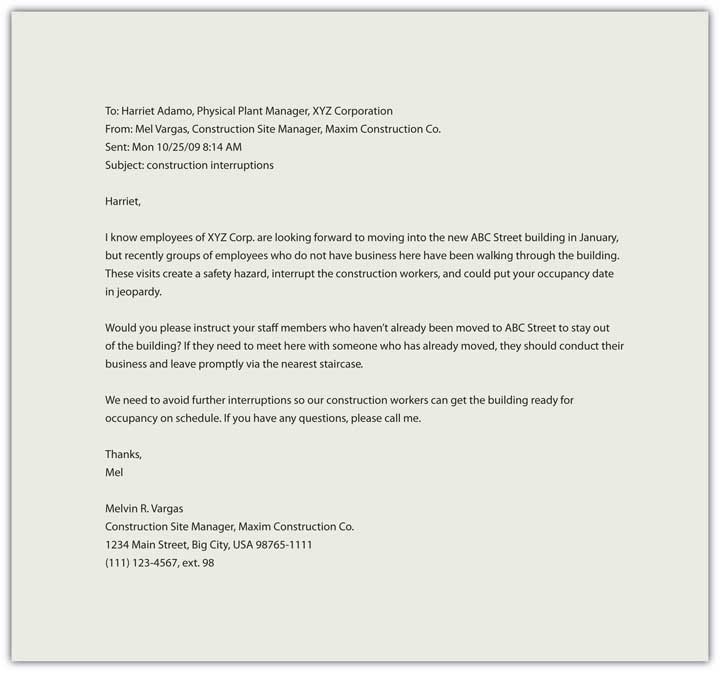6.2 Text, E-mail, and Netiquette
Southern Alberta Institute of Technology (SAIT)
Text messages and e-mails are part of our communication landscape, and skilled business communicators consider them a valuable tool to connect. Netiquette refers to etiquette, or protocols and norms for communication, on the Internet.
Texting
Whatever digital device you use, written communication in the form of brief messages, or texting, has become a common way to connect. It is useful for short exchanges, and is a convenient way to stay connected with others when talking on the phone would be cumbersome. Texting is not useful for long or complicated messages, and careful consideration should be given to the audience.
It is often said that you can tell how old someone is by how he or she inputs a phone number on a cell phone. If the person uses his or her thumb while holding the digital device, that person may have been raised on video games and be adept at one-handed interfaces. If he holds the digital device with one hand and inputs the number with the other, he may be over thirty, or may be less comfortable with some technological devices. Of course, there is no actual correlation between input and age, but it is a useful example to use when considering who your audience is when writing a text message. If the person is a one-hander, and knows all the abbreviations common to texting, you may be able to use similar codes to communicate effectively. If the person is a two-hander, you are better off using fewer words and spelling them out. Texting can be a great tool for connecting while on the go, but consider your audience and your company, and choose words, terms, or abbreviations that will deliver your message.
Tips for Effective Business Texting
- Know your recipient; “? % dsct” may be an understandable way to ask a close associate what the proper discount is to offer a certain customer, but if you are writing a text to your boss, it might be wiser to write, “what % discount does Murray get on $1K order?”
- Anticipate unintentional misinterpretation. Texting often uses symbols and codes to represent thoughts, ideas, and emotions. Given the complexity of communication, and the useful but limited tool of texting, be aware of its limitation and prevent misinterpretation with brief messages.
- Contacting someone too frequently can border on harassment. Texting is a tool. Use it when appropriate but do not abuse it.
- Unplug yourself once in awhile. Do you feel constantly connected? Do you feel lost or “out of it” if you do not have your cell phone and cannot connect to people, even for fifteen minutes? Sometimes being unavailable for a time can be healthy—everything in moderation, including texting.
- Do not text and drive. Research shows that the likelihood of an accident increases dramatically if the driver is texting behind the wheel (Houston Chronicle, 2009). Being in an accident while conducting company business would reflect poorly on your judgment as well as on your employer.
Electronic mail, usually called e-mail, is quite familiar to most students and workers. It may be used like text, or synchronous chat, and it can be delivered to a cell phone. In business, it has largely replaced print hard copy letters for external (outside the company) correspondence, as well as taking the place of memos for internal (within the company) communication (Guffey, 2008). E-mail can be very useful for messages that have slightly more content than a text message. It is best used for fairly brief messages.
Many businesses use automated e-mails to acknowledge communications from the public, or to remind associates that periodic reports or payments are due. You may also be assigned to “populate” a form e-mail in which standard paragraphs are used but you choose from a menu of sentences to make the wording suitable for a particular transaction.
E-mails may be informal in personal contexts, but business communication requires attention to detail, awareness that your e-mail reflects you and your company, and a professional tone so that it may be forwarded to any third party if needed. E-mail often serves to exchange information within organizations. Although e-mail may have an informal feel, remember that when used for business, it needs to convey professionalism and respect. Never write or send anything that you would not want read in public or in front of your company president.
Tips for Effective Business E-mails
- Proper salutations should demonstrate respect and avoid mix-ups in case a message is accidentally sent to the wrong recipient or it gets forwarded. For example, use a salutation like “Dear Ms. X” (external) or “Hi Barry” (internal).
- Subject lines should be clear, brief, and specific. This helps the recipient understand the essence of the message. For example, “Proposal attached” or “Your question about discount codes.”
- Close with a signature. Identify yourself by creating a signature block that automatically contains your name and business contact information.
- Avoid abbreviations. An e-mail is not a text message, and the audience may not find your wit cause to ROTFLOL (roll on the floor laughing out loud).
- Be brief. Omit unnecessary words.
- Use a good format. Include line breaks between sentences or divide your message into brief paragraphs for ease of reading. A good e-mail should get to the point and conclude in three small paragraphs or less.
- Reread, revise, and review. Catch and correct spelling and grammar mistakes before you press “send.” It will take more time and effort to undo the problems caused by a hasty, poorly written e-mail than to get it right the first time.
- Reply promptly. Watch out for an emotional response—never reply in anger—but make a habit of replying to all e-mails within twenty-four hours, even if only to say that you will provide the requested information in forty-eight or seventy-two hours.
- Use “Reply All” sparingly. Do not send your reply to everyone who received the initial e-mail unless your message absolutely needs to be read by the entire group.
- Avoid using all caps. Capital letters are used on the Internet to communicate emphatic emotion or yelling and are considered rude.
- Test links. If you include a link, test it to make sure it is complete.
- E-mail ahead of time if you are going to attach large files (audio and visual files are often quite large) to prevent exceeding the recipient’s mailbox limit or triggering the spam filter.
- Give feedback or follow up. If you do not get a response in twenty-four hours, e-mail or call. Spam filters may have intercepted your message, so your recipient may never have received it.
Let us look at two examples of business e-mail. In Figure 6.1 we have an e-mail form. In Figure 6.2, we have a letter written specifically for the situation and audience.
Netiquette
We create personal pages, post messages, and interact via mediated technologies as a normal part of our careers, but how we conduct ourselves can leave a lasting image, literally. The photograph you posted on your Instagram page may have been seen by your potential employer, or that angry remark in a post may come back to haunt you later. Some fifteen years ago, when the Internet was a new phenomenon, Virginia Shea laid out a series of ground rules for communication online that continue to serve us today.
Virginia Shea’s Rules of Netiquette
- Remember the human on the other side of the electronic communication.
- Adhere to the same standards of behavior online that you follow in real life.
- Know where you are in cyberspace.
- Respect other people’s time and bandwidth.
- Make yourself look good online.
- Share expert knowledge.
- Keep flame wars under control.
- Respect other people’s privacy.
- Do not abuse your power.
- Be forgiving of other people’s mistakes (Shea, 1994).
Her rules speak for themselves and remind us that the platinum rule (treat others as they would like to be treated) is relevant wherever there is human interaction.
AI Insight: Authentic Communication Matters
As AI content generators like ChatGPT become more integrated into workplace communication, professionals have expressed mixed perceptions about AI-generated emails, particularly regarding tone and authenticity. While AI-generated content is often regarded as professional and effective in achieving its intended purpose, it can be perceived as less sincere and caring when recipients are aware that AI was used (Coman & Cardon, 2024). This perception of inauthenticity comes from the limitations of AI in conveying emotional cues—readers may interpret the tone negatively, even when the message is neutral or polite, due to contextual factors such as relationships and organizational norms (Byron, 2008; Walther, 1996). These findings suggest that while AI can help craft well-structured, professional messages, it struggles to convey empathy and warmth, which are essential for building strong interpersonal connections.
For you, the business communication student, this highlights the importance of balancing AI’s efficiency with the need for your authentic voice and emotional intelligence in communication. As AI tools continue to evolve, you must be mindful of how your messages may be perceived by recipients, especially when using AI-generated content in professional settings. Developing skills in emotional awareness, tone management, and authentic self-expression will be important to ensuring that your written communications are effective and engaging.
Exercise
Test your knowledge of texting, email, and netiquette below by taking the quiz:



